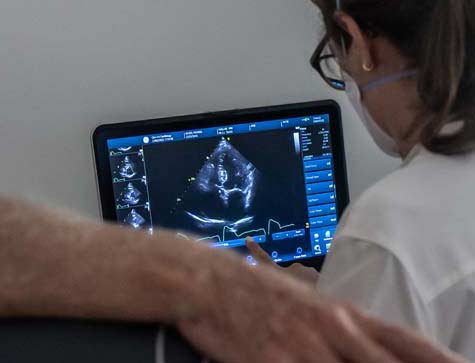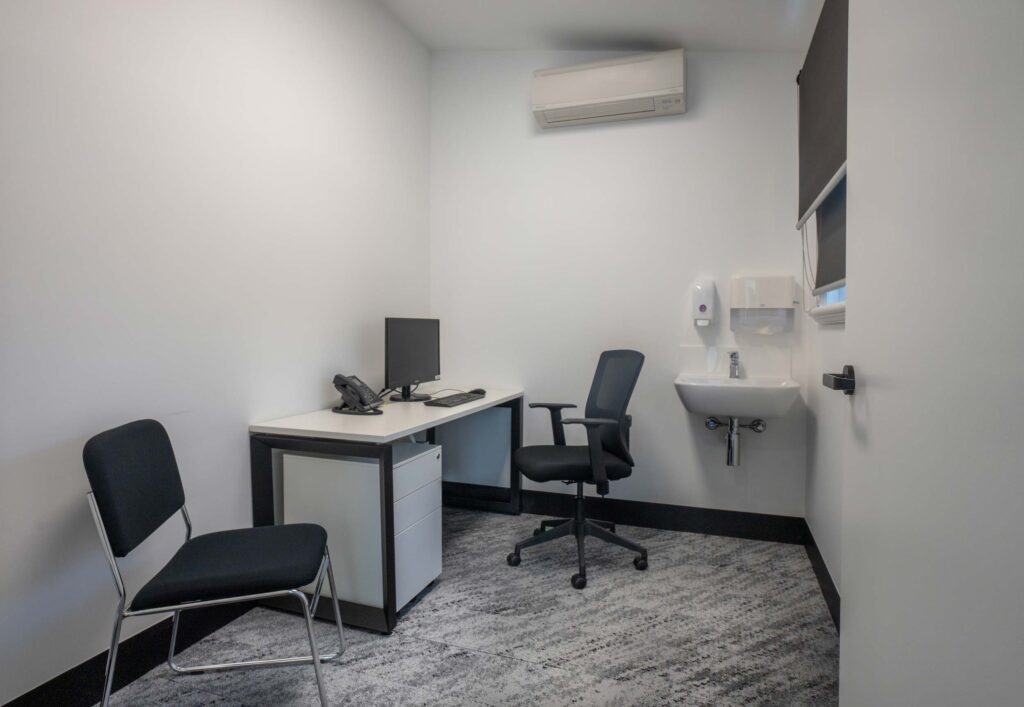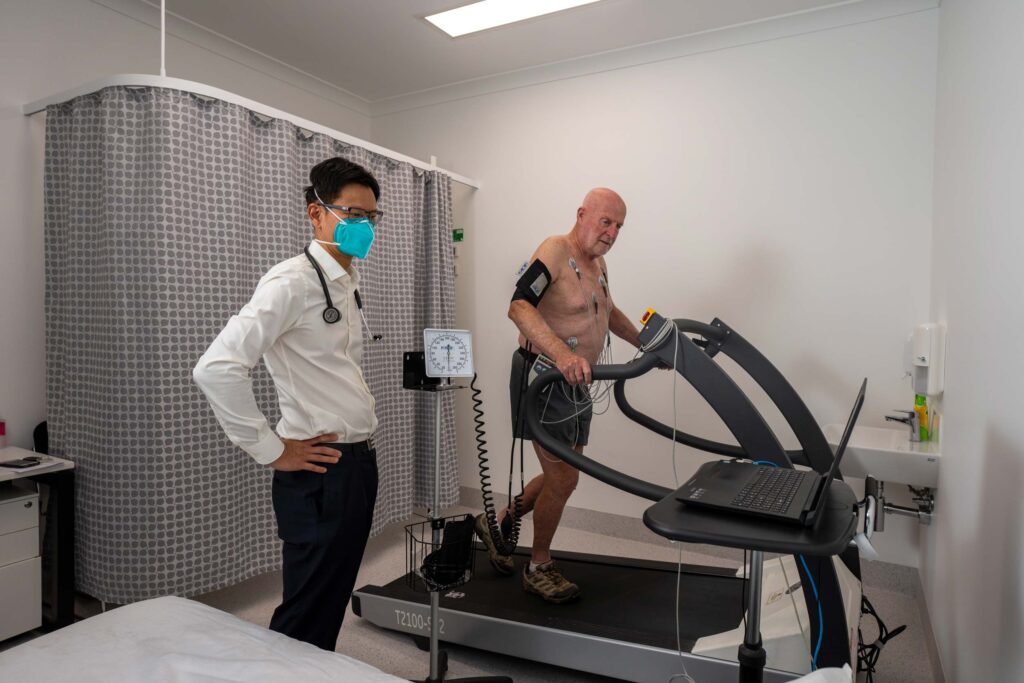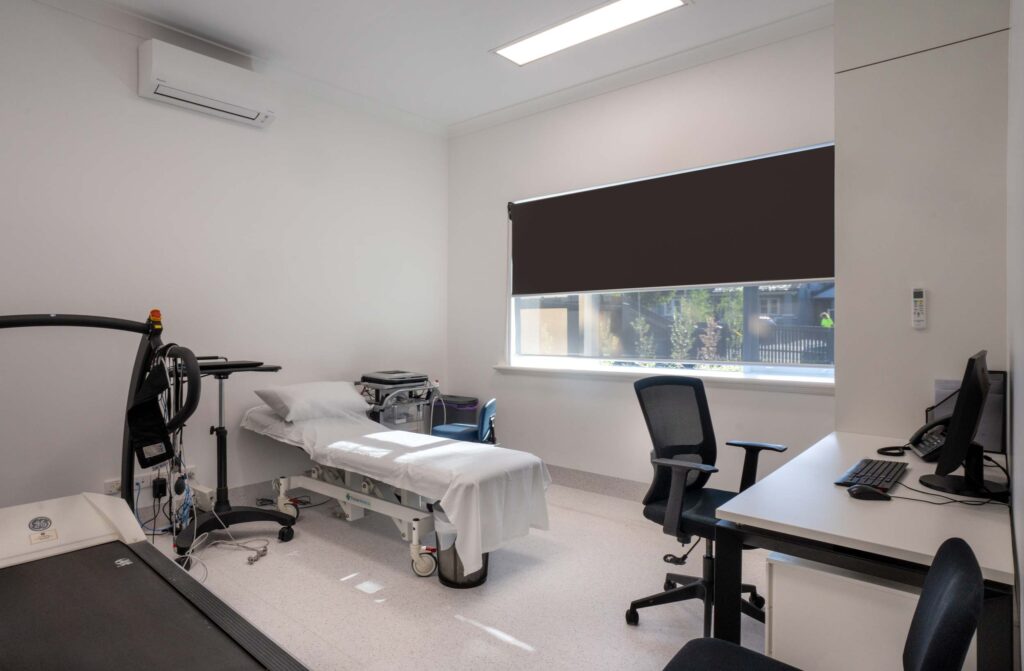Cardiac Testing
Stress Echocardiography
- To check of blood flow to the heart muscle, usually as a result of narrowed or blocked coronary arteries.
- It can also assess your exercise capacity when compared with that of a normal person at the same age and gender
- It may also be performed to assess the heart rate response to exercise.
- You should be dressed in sports gear, such as comfortable sports shoes, shorts or track pants.
- Sometimes medications are withheld deliberately for the purpose of the test, it may be advisable to discuss with the doctor if this may apply.
- ECG dots and leads will be attached to patients’ chest to monitor heart rate.
- Ultrasound images will be performed of your heart and repeated in the same position at the end of the treadmill stress test.
- The stress component follows a protocol. You will be required to walk on a treadmill, which starts at a slow pace, and every 3 minutes, the speed and incline of the treadmill will increase.
- Once your heart rate reaches an acceptable level, the treadmill is stopped.
- The duration of exercise on the treadmill is between 4-15mins depending on level of fitness and health. The entire test will take around 30 mins.
Echocardiogram
- An echocardiogram allows assessment of the structure and function of the heart muscle and valves.
- It can also assess the filling pressures of the cardiac chambers and the pulmonary circulation.
- You should be dressed in whatever is comfortable for you, as you maybe required to change into a hospital gown.
- Sticky ECG dots and gel are applied in several locations in the chest, which allows for image and ECG acquisition
- A standard procedure usually takes 30mins up to 1 hour
24h Holter monitor
- A Holter monitor facilitates a 24h recording of the heart rhythm, this allows detection of fast or slow arrhythmias
- It is advised that you have a bath or shower the morning of test, as you will be unable to do so for 24 hours
- You should also wear a loose fitting shirt or top as the technician will need to access to the chest area.
- The holter monitor has 5 electrodes which are attached to your chest. This will be loosely attached to your belt or shirt.
- During the 24h recording, you may press the button on the monitor to register when you experience symptoms. You can also document in a diary the nature of the symptoms, the time they occurred and what you were doing at the time.
- You will be able to carry out normal daily activities while the monitor is on, apart from that which may get the monitor wet, such as no swimming or showering. It is also advised that you do not use an electric blanket or magnetic underlay.
- The monitor will be returned to the practice at the end of the test
24h Blood Pressure Monitor
- A 24h BP monitor allows for multiple BP measurements taken during the day time and night time. This permits the assessment of your average blood pressure, which is a more accurate measure of blood pressure and correlates better with overall cardiovascular risk.
- It is advised that you have a bath or shower the morning of the test, as you will be unable to do so for 24 hours.
- You should wear a loose fitting wide sleeved shirt or top as the technician will need to attach the blood pressure cuff on the upper arm area.
- You will be wearing a blood pressure cuff, which is placed on your upper arm on one side.
- The cuff is attached via rubber tubing to a recorder similar to the size of an iphone which clips on to the waist of your trousers or skirt.
- Once attached the recorder will be tested in the clinic.
- For the 24h recording, the recorder is programmed to check blood pressure every 20 to 30 mins until 11pm, and hourly from 11pm to 7am.
- The monitor will be returned to the practice at the end of the test.
CT Calcium Score
- This test is typically performed on patients without symptoms, who have a number of cardiovascular risk factors. It helps to determine the role of medications and beyond diet and lifestyle treatment to prevent cardiovascular disease.
- There is no preparation requirement prior to the scan.
- The scan takes 10-15 mins.
- It does not require the insertion of a drip, or administration of extra medications prior to the scan
- The results are typically available for the referring doctor within a week after the scan.
CT Coronary Angiogram
- A CT coronary angiogram allows assessment of whether there are any cholesterol plaques and narrowings in the arteries. This allows us to identify whether this maybe contributing to your symptoms and helps assess your cardiovascular risk.
- Bring a friend or family member, someone to support you before, during and after your procedure.
- It is advisable to go without food for 2 hours prior to the test.
- It is also advisable that you do not have caffeinated food / drinks up to 8 hours prior to the test as they can interfere in heart rate control.
- It is important to a advise CT staff of conditions such as asthma, diabetes, kidney problems, irregular heart rhythm or allergies particularly to iodinated contrast.
The CT coronary angiogram is analogous to taking a picture of your heart. As your heart is a beating organ, heart rate control medications are typically given to slow down the heart, to allow the scanner to take relatively still images of the heart arteries suitable for interpretation.
A drip will be put into your arm to facilitate injection of dye which can highlight narrowings/ blockages of arteries that help diagnose coronary artery disease.
When the heart rate is deemed appropriate for the scan, you will be asked to lie on a bed which forms part of the CT scanner, which is a large machine with a circular hole. It is important to remain still during the scan, and to follow breathing instructions provided during the scan.
Once the scans have been completed, you will be taken to a recovery area for observation for 20 minutes or so.
The entire test may take from 1.5 – 3 hours, depending usually on time required for an appropriate scanning heart rate to be achieved.
The results are typically available for the referring doctor within a week after the scan.






